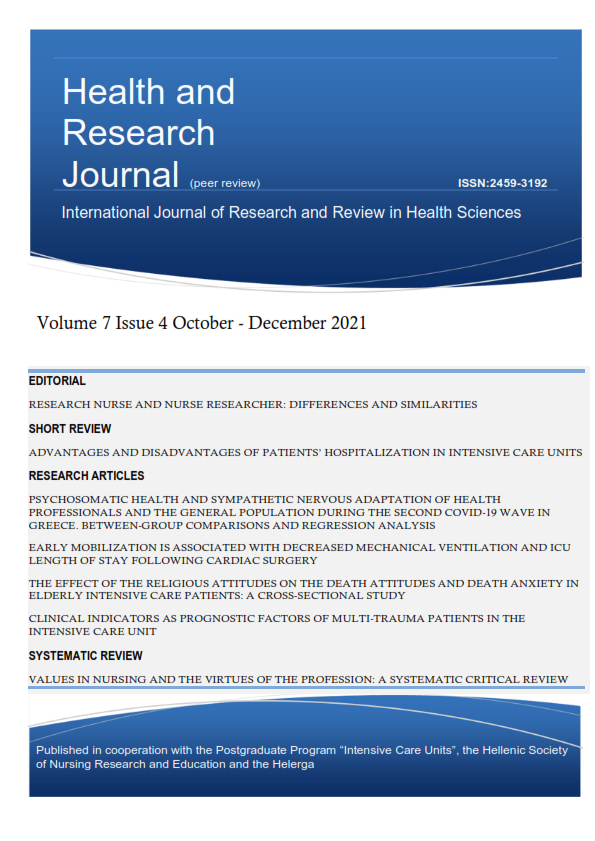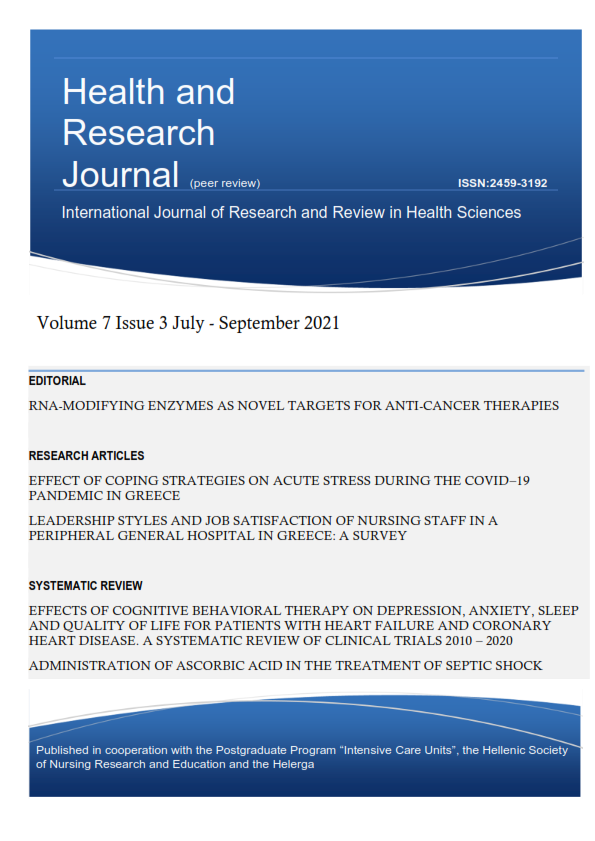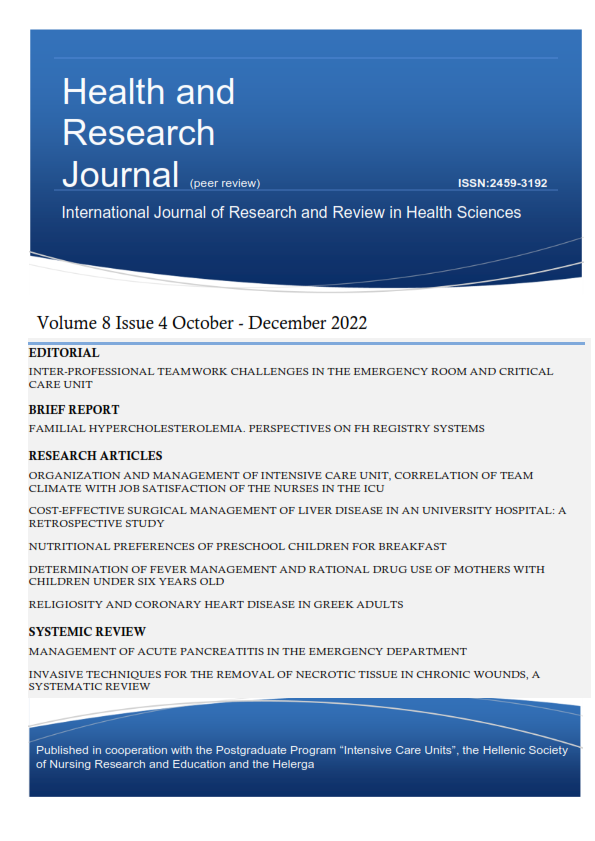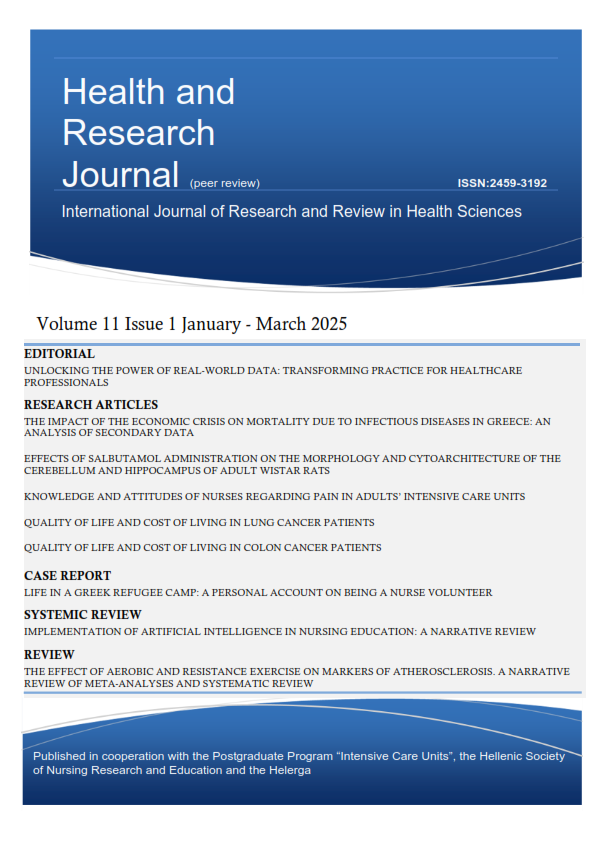Clinical indicators as prognostic factors of multi-trauma patients in the Intensive Care Unit

Abstract
Background: In recent years, there has been a growing interest in understanding the role of prognostic factors in patient outcome.
Aim: To investigate the role of clinical indicators, and severity-of-disease assessment scales, as prognostic factors in the outcome of multi-trauma patients in the ICU.
Material and Method: The sample consisted of 65 ICU multi-trauma patients treated in a hospital in Thessaloniki city, with an average stay of 16.5 days. Clinical indicators such as Glasgow Coma Scale, heart rate, mean arterial pressure, lactic acid, hemoglobin, urine output, as well as APACHE II and SAPS II scales, were recorded on the day of admission to the ICU.
Data analysis: Data were analyzed using multiple logistic regression and Mann-Whitney Test. Multiple logistic regression analysis was performed to examine the predictive capacity of specific indicators on patient outcome.
Results: The results of the analysis showed that in cases where all clinical indicators changed, then patient outcome may be affected by 79,4% (Relative Risk 3.846, p<0.001). Glasgow Coma Scale (p=0.022) and hemoglobin (p=0.013) were the strongest influencing factors related to patient outcome. Mann-Whitney analysis was used to evaluate the predictive value of Apache II and SAPS II and demonstrated that both systems could significantly predict patient outcome (APACHE II=0.019 and SAPS II=0.013).
Conclusion: Hemoglobin and Glasgow Coma Scale values upon multi-trauma patient admission to the ICU appear to be strong prognostic factors of patient outcome.
Article Details
- How to Cite
-
Agorogianni, D., Michalopoulos, E., Prantzou, A., Liaskou, C., Stamou, A., Kapadochos, T., & Tzenalis7, A. (2021). Clinical indicators as prognostic factors of multi-trauma patients in the Intensive Care Unit. Health & Research Journal, 7(4), 206–218. https://doi.org/10.12681/healthresj.28191
- Section
- Original Articles
Copyright notice:
The journal "Health and Research Journal" reserves the rights for copyright of the content of the website and also the copyright of the articles published.
By virtue of their appearance in this journal, the articles are free to be used for non-commercial purposes. However, the articles cannot and must not be used in anyway, published elsewhere or modified without any reference to the author and the first publication of the article.





